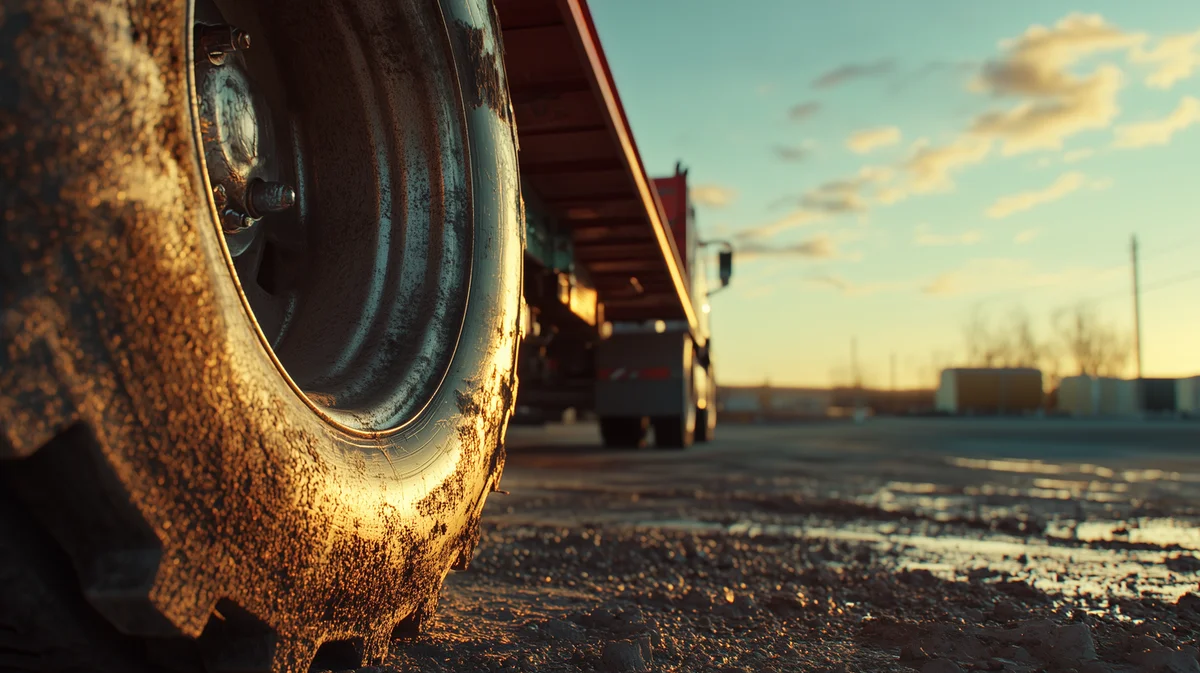Truck parking in Durham is becoming an increasing challenge for drivers and businesses. As demand rises and spaces remain limited, finding effective parking solutions is critical to keeping supply chains moving and roads safe.
Truck drivers, the backbone of America’s supply chain, ensure goods move efficiently across the country. However, a severe truck parking shortage creates delays, increases costs, and makes roads less safe.
With only one parking space available for every 11 trucks, drivers struggle to find secure, legal places to rest. This problem isn’t just inconvenient—it’s costly and inefficient.
According to a December 2024 report from the American Transportation Research Institute (ATRI), truck parking remains the second-biggest concern in the trucking industry, just behind the economy.
This problem isn’t just inconvenient—it’s costly and inefficient.
The Growing Cost of Limited Truck Parking in Durham & Beyond
Like many high-traffic regions, Durham’s parking shortage contributes to delays and inefficiencies in the supply chain. Truck drivers spend an average of 58 minutes per day searching for parking. Over a year, this wasted time leads to:
✔ $5,500 in lost fuel costs per driver
✔ Increased risk of fines for illegal parking
✔ Higher accident risks from fatigued driving
✔ Supply chain delays and inefficiencies
Beyond the financial burden, the lack of parking options often forces drivers to park illegally or drive beyond their hours-of-service limits, increasing safety risks and compliance issues.
Why Building New Parking is Challenging
Adding more truck parking sounds like an easy solution, but it’s expensive and time-consuming. The key challenges include:
✔ High costs – New parking construction costs $100,000 to $200,000 per space
✔ Long timelines – Projects can take years due to permitting and zoning restrictions
✔ Limited available land – Urban and high-traffic areas have little space for expansion
Truck Parking in Durham and Beyond: Making Better Use of Existing Spaces
Instead of waiting for costly new construction, businesses are finding innovative ways to maximize existing space. By taking advantage of unused land, repurposing industrial lots, and leveraging digital platforms, companies can help bridge the parking gap while long-term solutions are explored:
✔ Technology-driven platforms – Services like TruckParkingClub.com connect drivers with underutilized parking lots, assisting truckers to find safe and legal parking quickly. New parking apps and real-time reservation systems also help drivers secure a spot in advance, reducing search time and fuel waste.
✔ Storage yards and warehouses repurposing their space – Some facilities now offer truck parking as an added service, using land that might otherwise sit empty. By partnering with property owners and logistics companies, businesses can create temporary or semi-permanent parking solutions that increase capacity without requiring costly new infrastructure.
At Durham Industrial Storage, we recognize the urgent need for secure truck parking solutions for logistics companies and independent drivers.
With ample space and flexible storage options, we are helping solve this growing problem for truckers and logistics companies operating in the Durham area.
📌 Need secure truck parking in Durham? Contact us today to learn more about our available spaces.
The Road Ahead
As the demand for truck parking rises, businesses and property owners must work together to create more immediate solutions.
Whether through technology-driven platforms or repurposing existing industrial lots, addressing the truck parking shortage is essential for:
✔ Keeping supply chains moving efficiently
✔ Reducing fuel waste and emissions
✔ Enhancing driver safety and compliance
The truck parking shortage won’t solve itself. As more businesses and policymakers recognize the growing demand, collaborative efforts are needed to make parking more accessible. Industry groups, logistics companies, and government initiatives must work together to develop innovative solutions, including better land utilization, improved regulations, and incentives for property owners to repurpose unused spaces.
In the meantime, independent storage facilities and tech-driven platforms continue to bridge the gap, offering short-term relief while long-term infrastructure improvements are explored. By making better use of existing spaces and adopting innovative solutions, businesses can help keep supply chains moving efficiently and drivers safe on the road.
